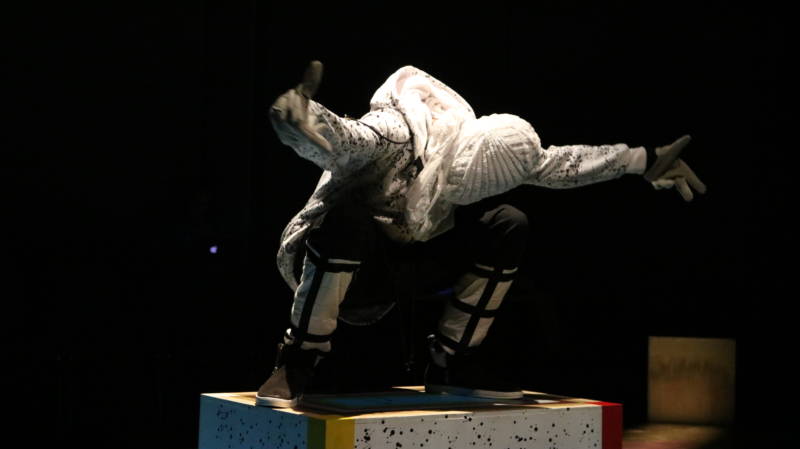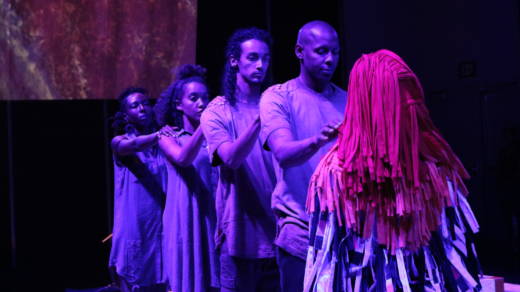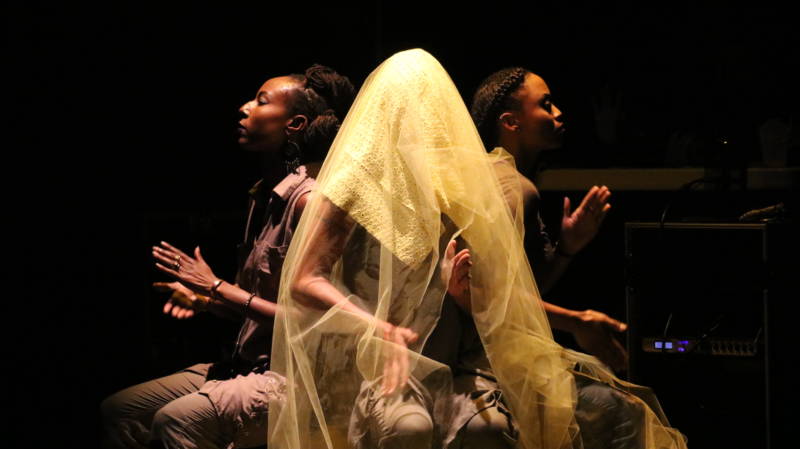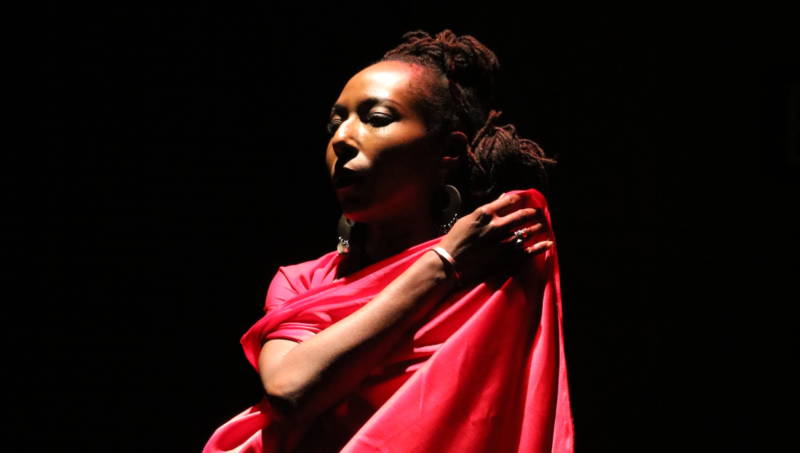Campo Santo’s beautiful, straightforward, and oblique performance piece Ethos de Masquerade begins with choreographer Rashad Pridgen slithering on stage in a costume that makes him resemble something between a street bum and the infamous graffiti artist and anarchist Banksy.
That Pridgen’s face is masked, that he seems full of bonhomie with a sly hint of outlaw danger — he’s got a cigar and offers swigs of alcohol to the audience — only adds to the allure. In a show that directly addresses contemporary, hot-button issues such as gentrification, feminism, racial inequality, and AIDS, the thing that dances before our eyes is a mystery.
Right from the start, there is a serious tension between the symbolic and the singular facts of the street that gives Ethos de Masquerade a strange realism.

You can feel it in the way the excellent six dancer-actors perform. They seem both an abstraction — dressed alike and almost militaristic in their precision and movements — and a group of friends just casually talking about the world as they stroll through the city. They point to all the ways the city around them has changed and we feel as if we are with them, that they are just friendly guides — “Look up: things are gone.”
The performers’ lament isn’t so much an anti-gentrification screed as it is the wonder of a world ripped right out from under them. The delivery is stylized, but it has the feel of casual talk. And that tonal control allows the performers to get away with polemical lines like, “We don’t bury our dead, we build over them,” as well as references to Japanese internment camps and Jonestown.





